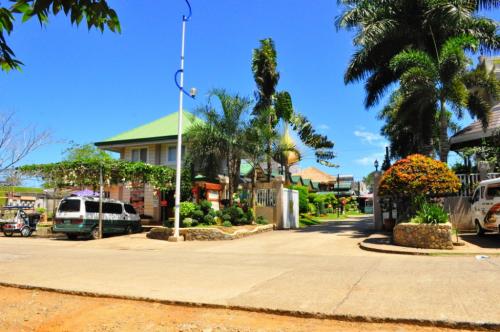
Brief History
The island of "BUGLAS" was discovered in April 1565 by the crew members of the boat Esteban de Rodriguez, making Juan de Aguirre the first Spaniard to set foot on the island. From the accounts of these men, it was inhabited by short, dark-skinned natives called "Negrillos" - which gave rise to the present name of the island: NEGROS.
Negros Occidental Description
Often referred to as the land of genteel people and large sugar plantations, Negros Occidental is blessed with beautiful natural scenery, unexplored waterfalls and mountains, white sand beaches, and crystal springs.
Negros Occidental’s wealth has always been its land, its charm in its people, its pride in its cuisine. These elements make for a destination that is best when experienced.
Climate
Negros Occidental has two pronounced seasons, wet (June-November) and dry ( December - May).
Population
The most recent census on population conducted on May 2000 shows that Negros Occidental has a population count of 2,565,723.
Major Industries
Negros Occidental is the “Sugarbowl of the Philippines.” Sugar was introduced to the Negrense during the Spanish period and has been the main industry of the province since then. Other industries include aqua culture, agribusiness, steel fabrication, and beer breweries.
Geography
Strategically located as part of the Western Visayas Region, the province of Occidental Negros occupies the western portion of Negros Island. It is bounded to the north by the Visayan Sea; to the east by the province of Oriental Negros and partly by Tañon Strait; to the west by the Strait of Guimaras; and to the south by Sulu Sea.
Political
Negros Occidental is subdivided into 19 municipalities and 13 cities. Negros Occidental has the most chartered cities among all the provinces in the Philippines, it is the second largest province in the Philippines in terms of population after cebu, with the second largest number of congressional districts. It is the 7th largest in terms of land area
Cities
* Bacolod City
* Bago City
* Cadiz City
* Escalante City
* Himamaylan City
* Kabankalan City
* La Carlota City
* Sagay City
* San Carlos City
* Silay City
* Sipalay City
* Talisay City
* Victorias City
Municipalities
* Binalbagan
* Calatrava
* Candoni
* Cauayan
* Enrique B. Magalona (Saravia)
* Hinigaran
* Hinoba-an (Asia)
* Ilog
* Isabela
* La Castellana
* Manapla
* Moises Padilla (Magallon)
* Murcia
* Pontevedra
* Pulupandan
* Salvador Benedicto
* San Enrique
* Toboso
* Valladolid
Negros Occidental it can be found near the central part of the country. It is one of the five provinces that compose Western Visayas or Region VI. It is located in the northwestern portion of Negros Island, the fourth biggest island in the Philippine archipelago. It is bounded on the north by the Visayan Sea, and on the south by the Sulu Sea. It is southeast of Panay Island from which is separated by the Guimaras Strait. On the east are the Tañon Strait and Negros Oriental, its sister province, which forms part of Central Visayas or Region VII because of its prolixity to Cebu.
Sources: